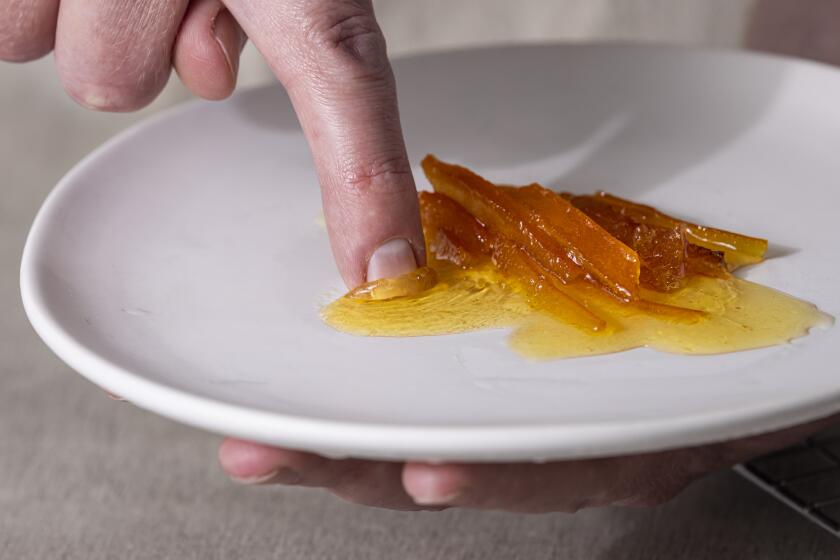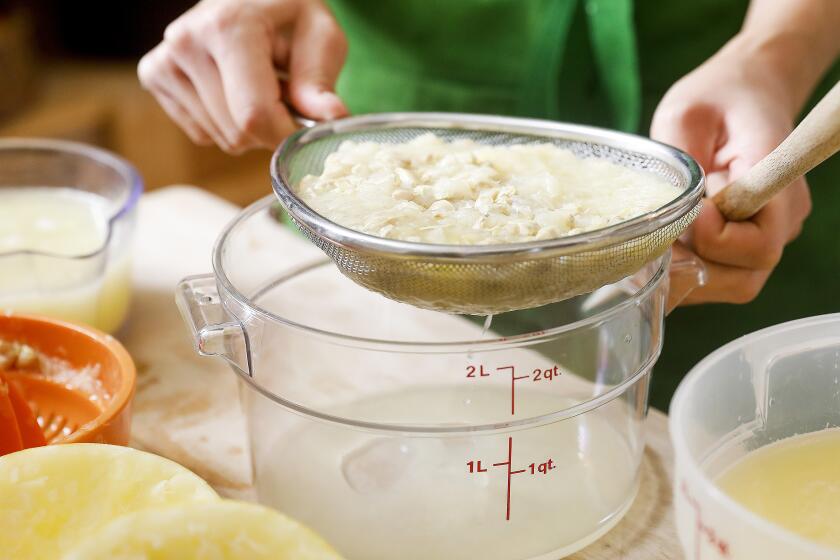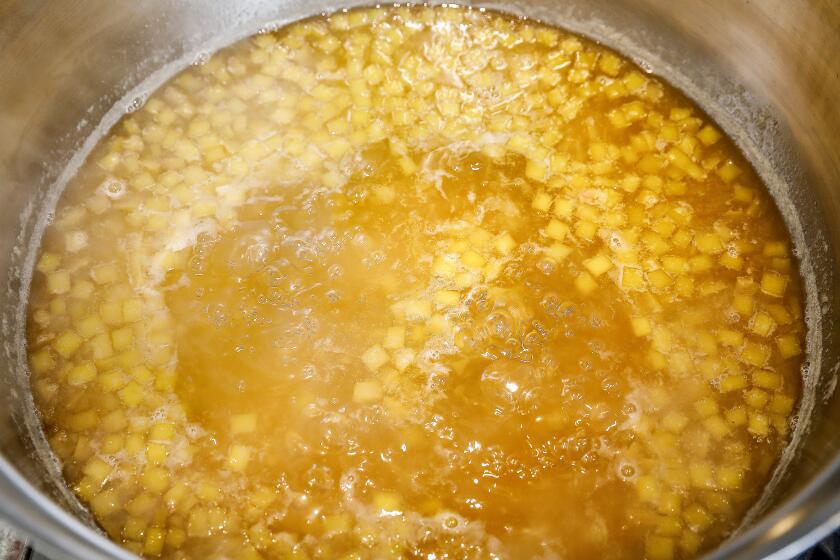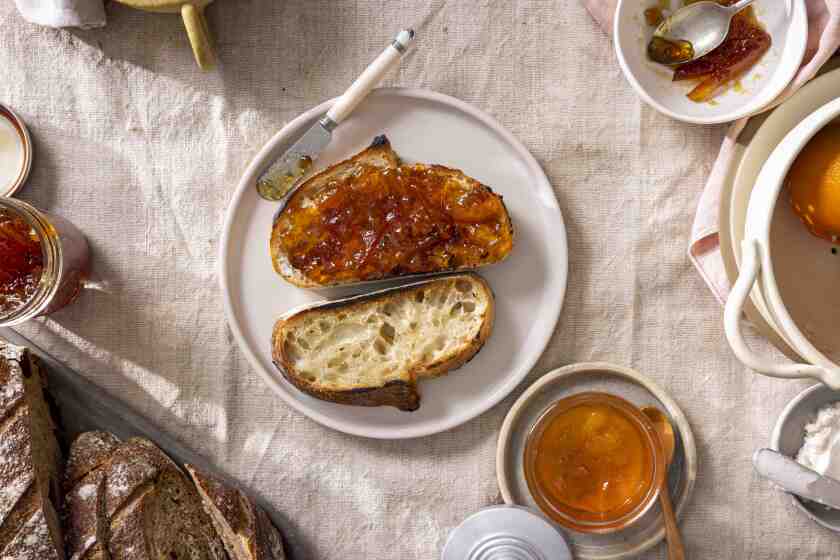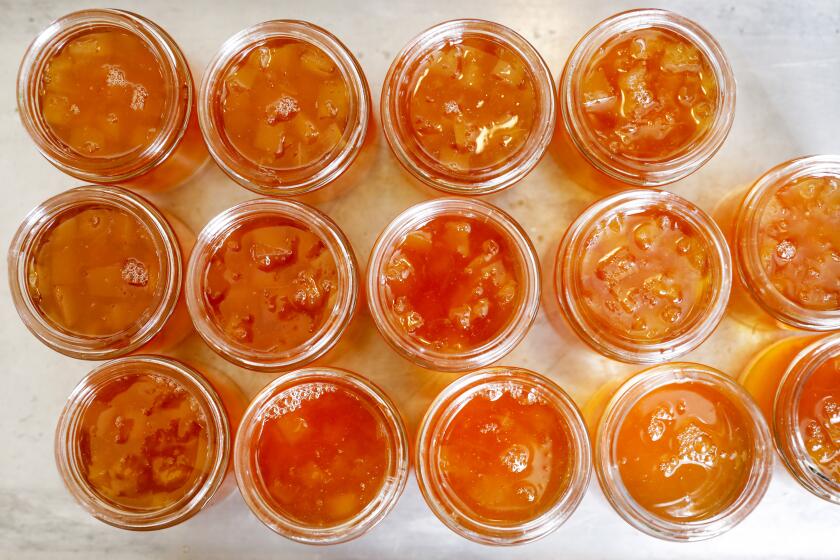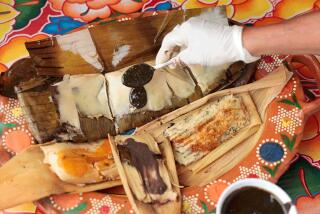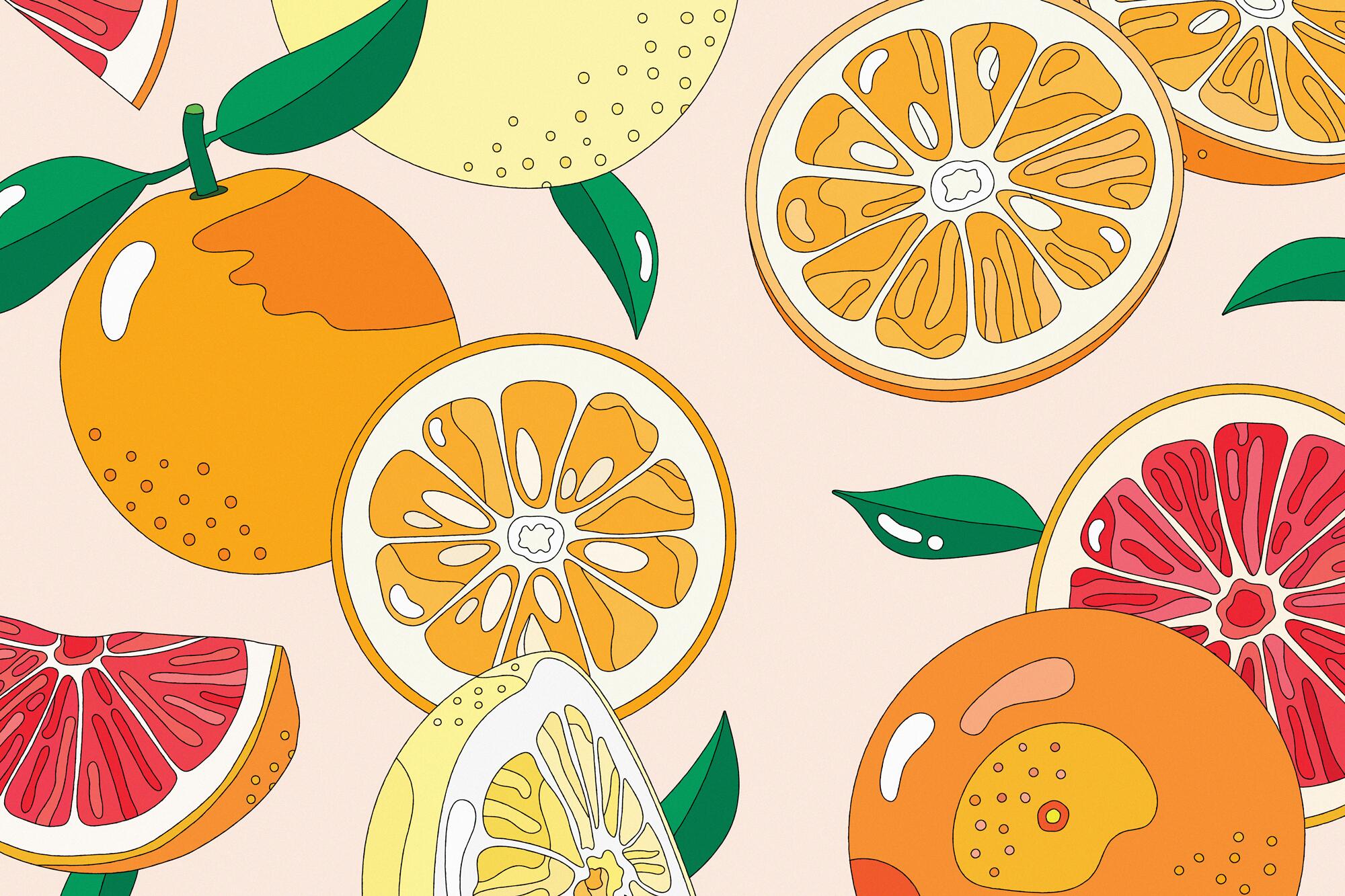
This story is part of a four-part series on preserving fruit at home called “L.A. in a Jar.”
Growing up, I hated marmalade. Possessing a giant sweet tooth in a sugar-loving part of the South, I found marmalade’s complex taste didn’t appeal to me. It was too bitter; the chunks of citrus peel too tough. “Who ate this stuff?” I’d always wonder. But then I grew up, and as I fell into making jam the way many people meditate or go to therapy, I found myself making fruit preserves that were more tart than what I liked when I was younger. Once I finally had the nerve to tackle marmalade, I thought, “If I can change plum jam or apple butter to suit my taste, why can’t I do the same with orange marmalade?”
I spent all winter last year making marmalade of all styles and types and with all manner of citrus I bought at the farmers market. (It’s the perfect wintertime project because it takes a while and, well, I had nothing but time back then.) I learned many lessons along the way about how bitter I like marmalade (not very — thankfully, it can be tamed!) and what fruits are the best for my palate (Bitter oranges, yes. Tart lemons? Not so much.) I also tried dozens of recipes, all of which called for a slightly different method of handling the citrus. And I found a lot of it unnecessarily complicated.
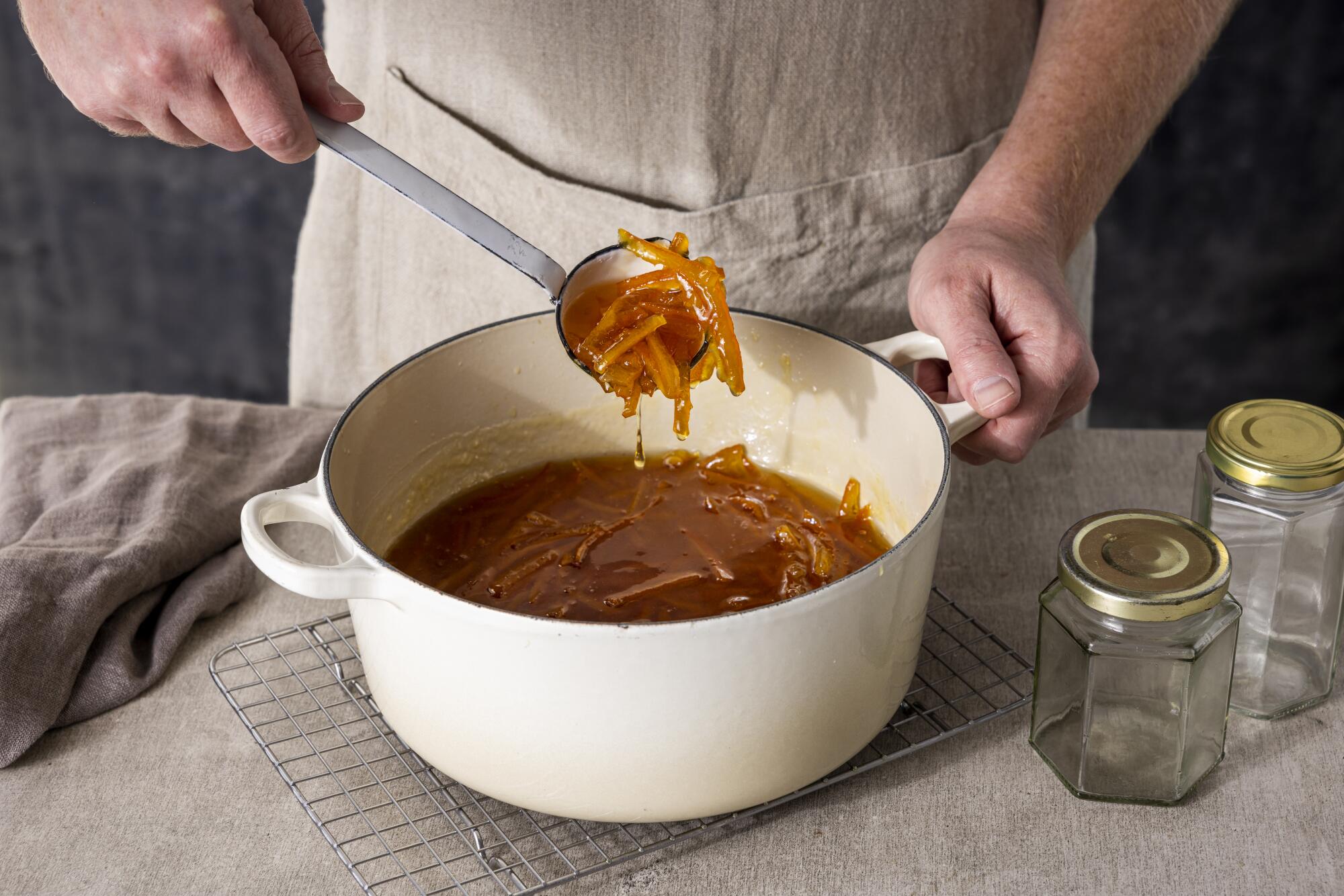
So, in an attempt to fix that, I developed my own method that makes the whole endeavor just about as easy as stirring some fruit with sugar to make a simple jam or lazily boiling some apples for a fruit butter. It’s a method that allows you to make marmalade with whatever citrus you want and keep around throughout the winter, like I do, to have with toast or on oatmeal — or in cocktails — whenever you want.
Here are the key steps to get right when making marmalade.
But first, you gotta pick the right fruit. Historically, and even today, the best fruit for the job is a Seville orange, a sour-bitter variety that’s used as a souring agent in many Caribbean and Latin American cuisines in lieu of lemons or limes. Its powerful sourness and bitterness are what make it the perfect candidate to balance the amount of sugar needed to make marmalade, just like sour plums and tart apples make the best jam and fruit butter, respectively.
Pomologist and longtime L.A. Times contributor David Karp says, “There’s certainly no crime in using a sweet, navel orange. But Sevilles have a pungency in the oil from their rinds that navels just don’t have.”
How to judge if your marmalade is set by using a frozen plate.
In explaining the pedigree of both fruits, Karp demonstrates how they’re so different: “Sour oranges, like Sevilles, are a 50/50 cross with a pomelo and mandarin orange, whereas sweet oranges, like navels or Valencias, are a 50/50 cross between a sour orange and, once again, a mandarin orange. Sweet oranges have been bred for more sweetness, so in that process, the aromatics that make sour oranges so special are diluted.”
And while it may seem like the more aromatic and exciting orange would win out, it’s not satisfying to eat raw, and that, says Karp, was its downfall: “What is pleasant to humans determines what is grown.”
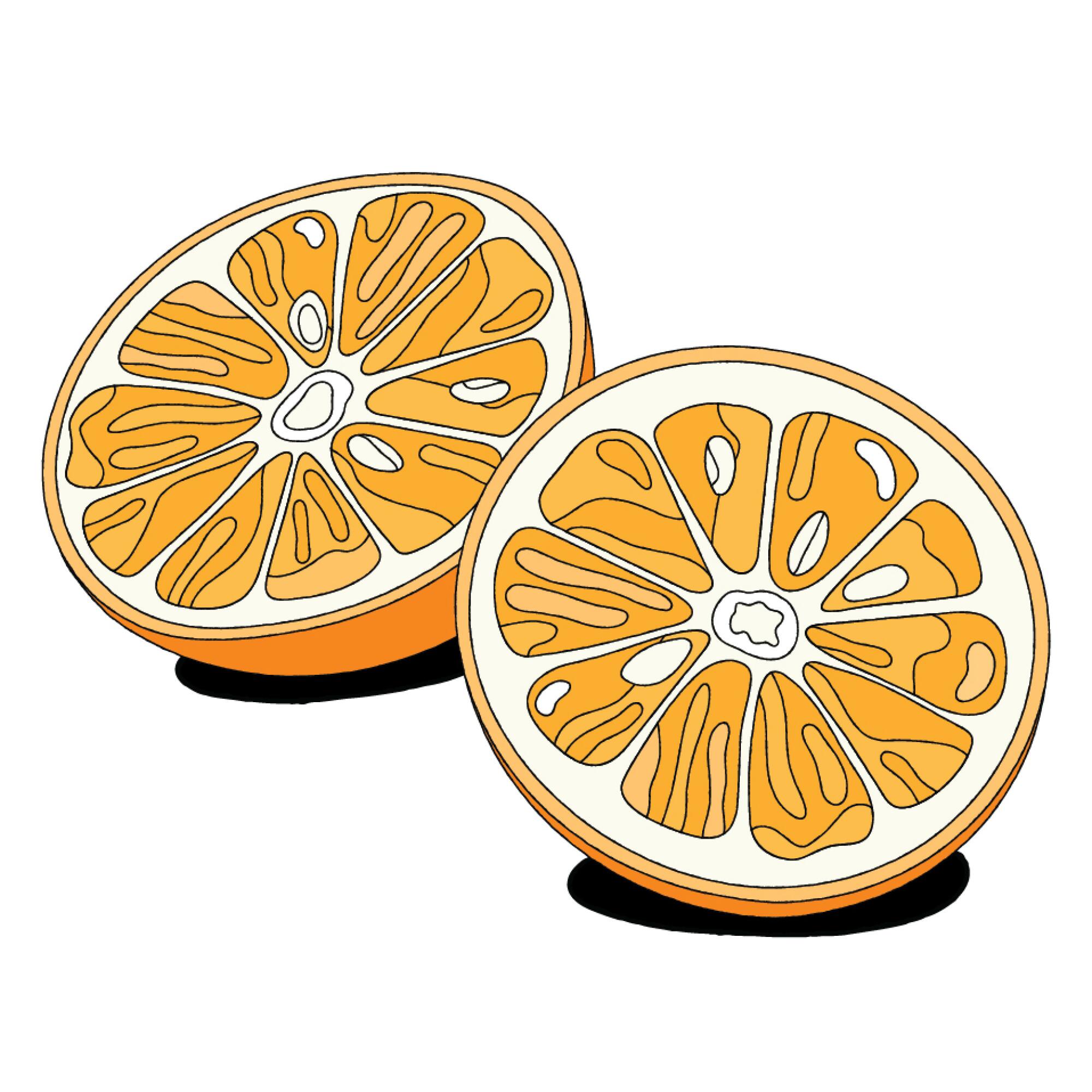
Sevilles are rarely grown in California but there are still some available in farmers markets — I always get mine from JJ’s Lone Daughter Ranch at the Hollywood Farmers Market. But if you can’t get Sevilles, know that marmalade can be made from all manner of bitter or sour citrus. Virtually any grapefruit makes a great marmalade because they’re so bitter, and limes are also a great contender.
A blessedly brief description of all the different names used for fruit preserves.
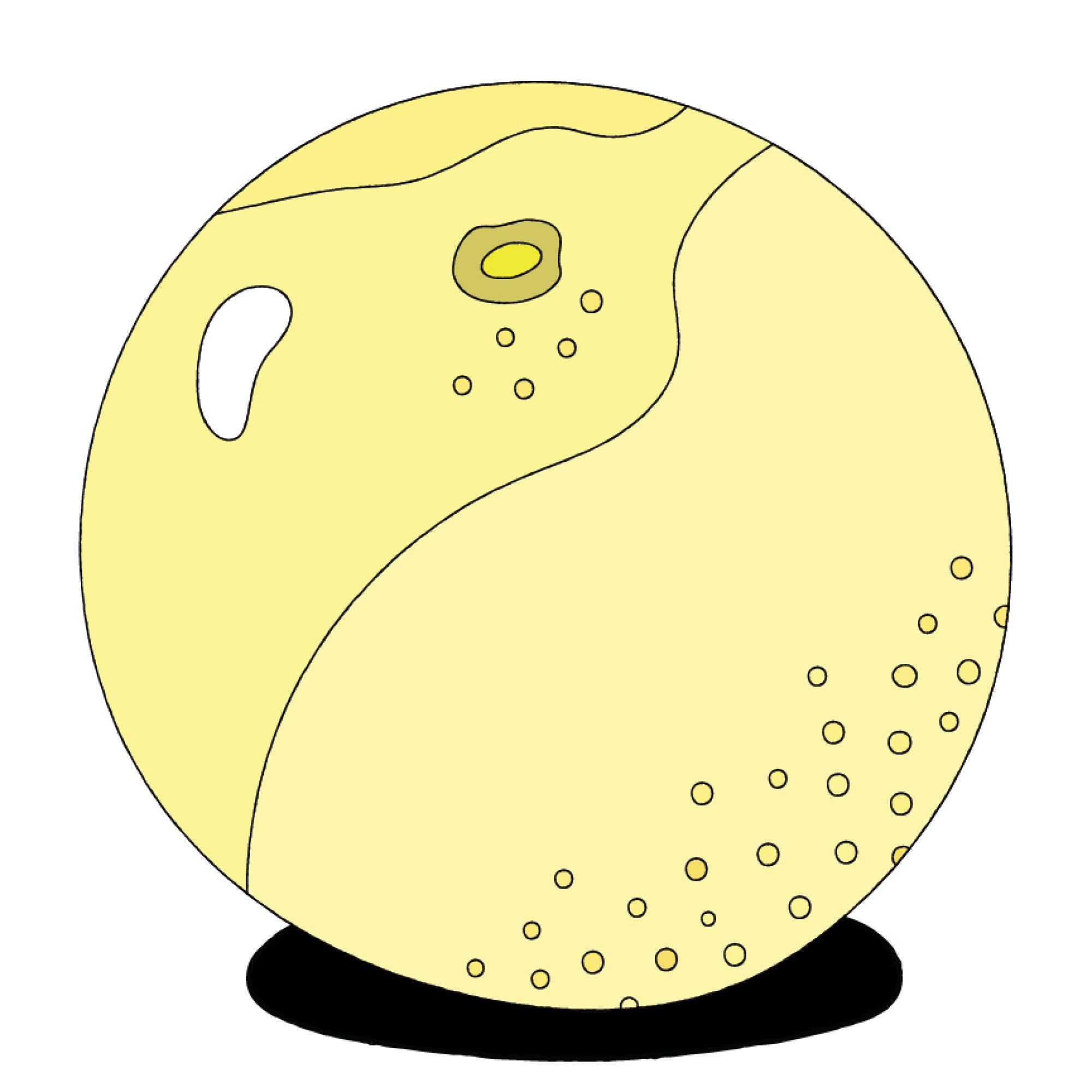
One of the best candidates that grows in abundance in Southern California is the oro blanco grapefruit. Slightly sweeter than regular white grapefruits, the oro blanco is very aromatic and has a thick peel that makes it perfect for turning into marmalade or for candying. My friend Sonoko Sakai, a cookbook author and cooking teacher, has an oro blanco tree in her backyard in Highland Park and for the last couple of years has worked to transform its harvest into a delicious marmalade that she sells online and at farmers markets.
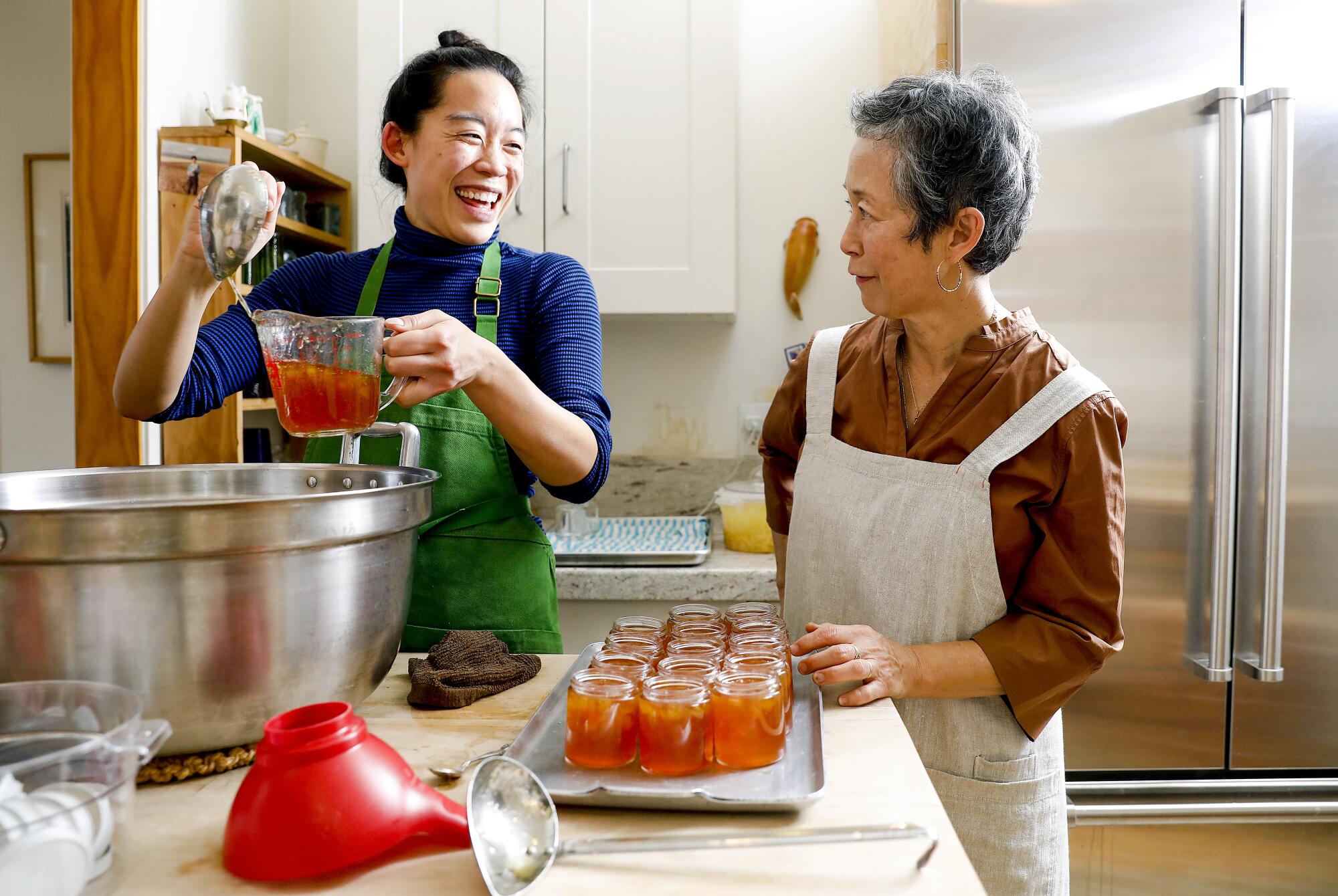
Sakai works with her collaborator, chef Alaina Wong, to make small batches of the marmalade in Sakai’s home kitchen. The method she uses was given to Sakai by her friend Saba Parsa, the creator of Saba Jams. As Sakai’s tree produces more and more oro blancos, she keeps making marmalade. “These oro blancos, and all grapefruits, are very ‘California’ to me,” Sakai says. “They keep me grounded in this place. And this tree is a very giving tree. It started producing fruit in October and will continue on through at least the beginning of March.”
An explainer on pectin and why it’s crucial to getting the proper set in marmalade.
Wong, a recent transplant from London, brought with her the Brit’s natural knack for making great marmalades. On a recent rainy Wednesday, I watched as she juiced the oro blancos, then simmered the peels until soft in a large cauldron. Once tender, the peels are scraped and cut into tiny squares, a lovely detail that makes their marmalade stand out from the thinly sliced norm. Then the peels bubble away with sugar until they create a golden-hued marmalade that smells intensely of the oro blanco’s sweet, morning-sunshine aroma.
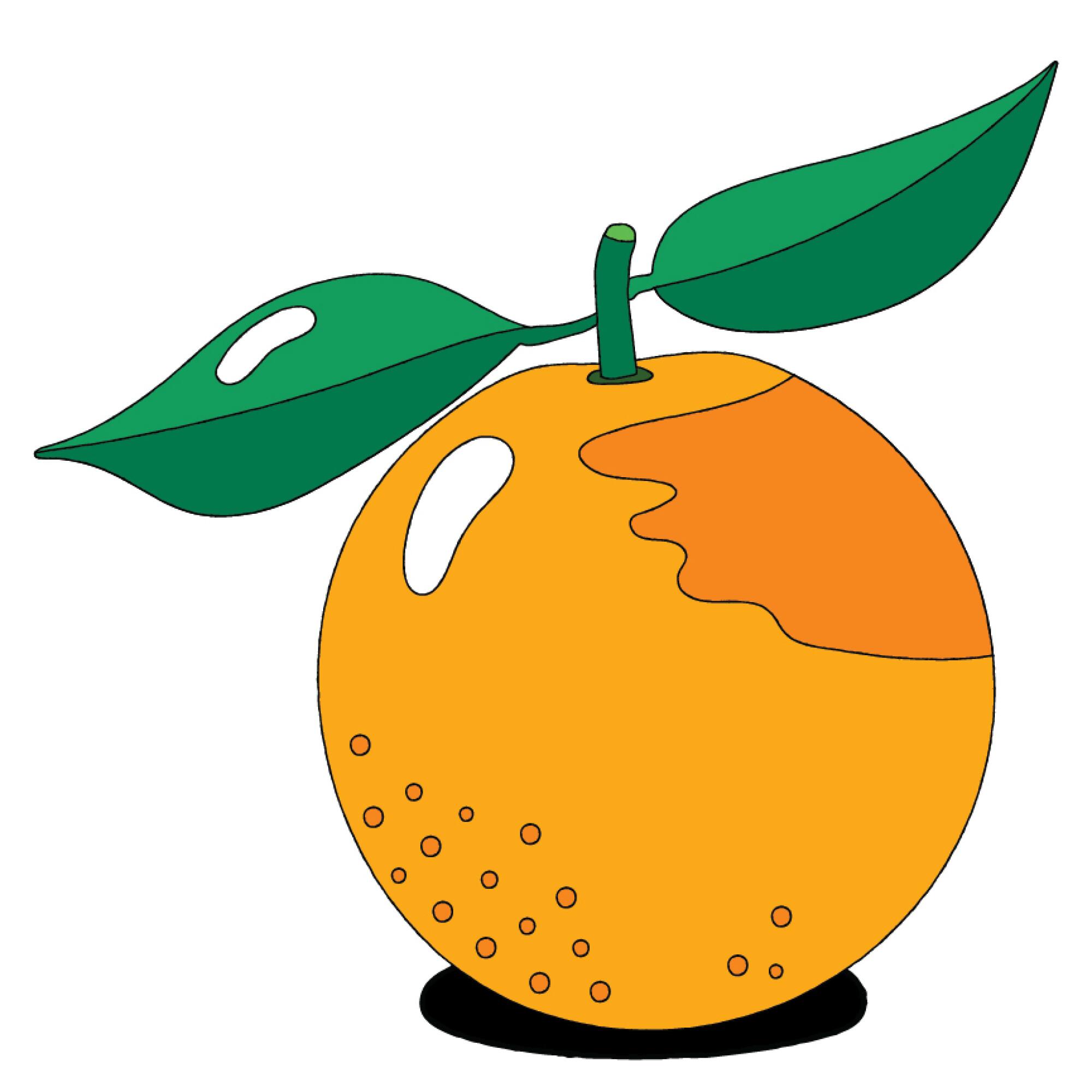
But while the intense aromatics of oro blanco grapefruits and Seville oranges make for some of the best marmalades, I believe that a good ol’ navel orange can also make a stellar marmalade, especially for novices. There’s still plenty of bitterness in its peel to counteract the sugar needed to make the marmalade, and its fragrance is strong enough to come through in the finished product. In fact, if you’re like I was at first, its mildness might be a boon: Once you’ve got a handle on its flavor, then you can make adjustments — less bitter, more acid, some vanilla perhaps — before moving on to the more precious (i.e. costly) fruits.
A technique to keep the foam down so you don’t have a syrupy stove.
While many recipes for marmalade start off with juicing the citrus, scraping out the peels and then thinly slicing them before boiling, I prefer to boil the fruits first for one big reason: It makes the process so much easier. Scraping and slicing raw citrus peels takes a lot of effort, and I’ve wound up with blisters on my hand from the prolonged pressure necessary to slice through the amount of peels required to make a recipe. But if boiled first, the peels are soft, like tofu, and barely any pressure is needed to scrape away their membranes and slice them into beautiful strips.
Aside from having to juice the citrus and boil the peels, which takes an easy, hands-free hour or so, the rest of the process is just like making any other fruit jam or butter. It’s the type of cooking project that should be stress-free, and with my method, I hope you’ll find it’s just that. When you come across beautiful citrus at the farmers market, at the grocery store or from a friend’s backyard tree, snag a few extra to make marmalade and extend the joy that eating citrus, in any form, can bring.
Get the recipes:
Master Orange Marmalade
Oro Blanco Marmalade
More to Read
Eat your way across L.A.
Get our weekly Tasting Notes newsletter for reviews, news and more.
You may occasionally receive promotional content from the Los Angeles Times.

